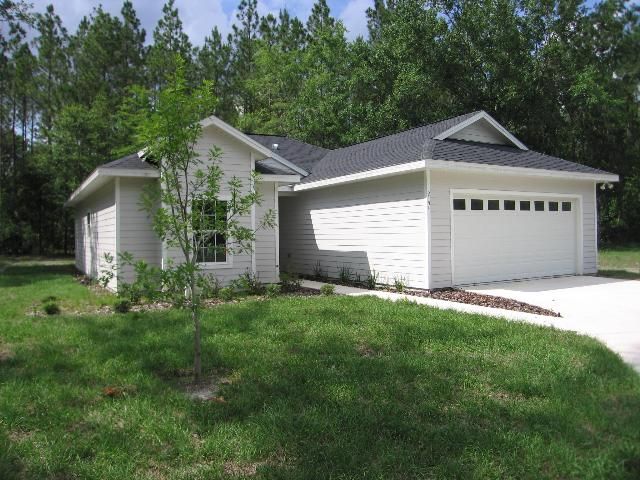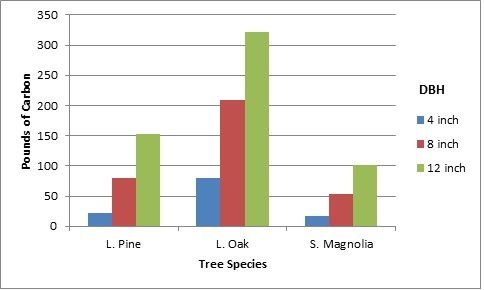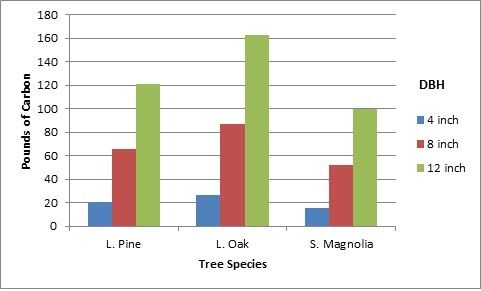Introduction

Credit: Rick Vaughn, 2012
As urban communities grow, design and management strategies for residential developments become critical factors that determine impacts on natural resources. How can we accommodate growth and yet conserve natural resources such as biodiversity, water, and energy? Recently, a popular concept called conservation subdivision design and its product, the conservation subdivision, has been advanced by the landscape architecture community and has gained traction in the design fields. Conservation design is intended to plan for growth while conserving biodiversity and natural resources. Conservation subdivisions typically are developments of small lots clustered to use a smaller area of land than conventional subdivisions while allowing open space to be conserved.
The goals for conservation subdivisions are twofold: 1) to improve biodiversity and natural resource conservation within a designated subdivision; and 2) to minimize development-related impacts on surrounding habitats. Often, though, most of the effort is in the design of the entire site. To conserve and improve biodiversity within urban environments effectively, one must consider the following three phases of development: design, construction, and post-construction.
The design phase is typically where, among other aspects, lot size and open space are designated, and roads are distributed throughout the site. Goals for the development project are discussed and prioritized. In this phase, homes and lots are placed across the site, and the remaining area is designated as (natural) open space. Basically, everything is laid out on paper, and vertical structures (buildings) and horizontal structures (roads, lots, conserved areas, and shared spaces) are given specific spaces within the development.
Next, during the construction phase, a whole host of built environment professionals including architects, contractors, arborists, and subcontractors take whatever is on paper and implement it on the ground, constructing homes, streets, waste treatment systems, and landscaped areas (i.e., yards and parks). In the absence of fully trained or engaged contractors or landscapers, many things can happen during this phase that could impact the viability of onsite and nearby natural habitat. For example, even if the most important large trees are preserved across the subdivision and built areas are designed around them, grade changes or the placement of topsoil and routes used by heavy construction vehicles could eventually kill these trees. If heavy vehicles continually run over the root zone of a tree or if soil is compacted, the roots may not be able to acquire nutrients, water, and oxygen, and the tree might die.
In the final phase, post-construction, buyers purchase the homes, move into the community, and manage their own homes and yards, neighborhoods, and common areas. It is now the responsibility of residents to manage their homes, yards, and neighborhoods in ways that do not compromise the original intent of the community. Additional problems can arise if residents are not fully engaged—imagine residents moving in and planting invasive exotic plants in each of their yards. Residents could also improperly apply fertilizers and pesticides. The spread of invasive plants and stormwater runoff could then destroy or at least severely reduce the diversity of animals and plants found in the conserved areas.
Overall, these three phases must be addressed in order to minimize environmental impacts and to create and maintain biodiversity and to conserve natural resources within residential subdivisions. The EDIS documents in the series titled "Conservation Subdivision" discuss biodiversity conservation pertaining to all three phases of development: design, construction, and post-construction. This fact sheet focuses on decisions made in the post-construction phase. During the post-construction phase, the conservation and planting of native trees in individual yards and open spaces can reduce household and neighborhood carbon footprints. Below, we discuss the importance of urban trees and their role in mitigating for climate change by avoiding carbon emissions and removing carbon dioxide from the atmosphere.
Climate Change and Household Carbon Footprint
Climate change, the direct result of greenhouse gas (GHG) emissions, continues to be a serious environmental and societal concern. Over the last 100 years, Earth's average surface temperature has increased by 1.2 to 1.4°F (USEPA 2010b). An increase in Earth's surface temperature can directly affect shifts in weather patterns; melt glaciers and polar icecaps; raise sea levels, flooding coastal zones; and thaw permafrost, which will release more greenhouse gases. Possible indirect effects of climate change are increases in erosion, disease transmission, and shifts in wildlife migration and distribution.
Four main greenhouse gases make up approximately half of all GHG emissions: methane, nitrous oxide, fluorinated gases, and carbon dioxide. Most of these gases come from the burning of fossil fuels and wood products, but some come from processes such as agricultural production, and industrial activities like cement manufacturing (USEPA 2010a). Greenhouse gases released into the atmosphere as a result of these activities hinder the escape of radiant heat into space, thereby raising global temperatures.
A variety of everyday household activities are also direct and indirect sources of carbon dioxide (CO2). Carbon dioxide is released through electricity use, home heating, waste, transportation, and landscape maintenance. The average family of four in the United States emits about 83,000 pounds of CO2 per year (USEPA 2011). This is the typical carbon footprint of a home, and there are a variety of online carbon footprint calculators that people can use to estimate their carbon footprint: http://www.nature.org/greenliving/carboncalculator/index.htm, and http://www.carbonfund.org/offset/businesses are two. In order to address these carbon emissions and reduce residential carbon footprints, homeowners can install compact florescent lights and energy saving appliances, adjust thermostats, recycle, and carpool. But what can be done in the yard? It turns out a great deal can be done. A great place to start is with trees. The preservation of existing healthy native trees and the proper selection and planting of new ones can directly and indirectly sequester carbon and or help avoid carbon emissions, thereby reducing the initial owner's residential energy use, and, assuming subsequent owners continue to maintain the trees, reducing the carbon footprint of the residence throughout its life.
Different Trees and Their Capability to Reduce Household Carbon Footprints
Trees perform an important function in the natural carbon cycle. Through the process of photosynthesis, trees sequester, or capture, carbon dioxide (CO2) from the atmosphere to create energy for growth. This carbon is then stored in the tree's biomass over its lifetime. Trees store carbon in their leaves, branches, trunks, stems, and roots, and their fallen leaves contribute biomass to the soil. In addition to directly limiting carbon emissions by storing carbon, trees can indirectly limit emissions when they are positioned effectively so that they shade the house. Providing for shade and evapotranspiration near homes (see https://edis.ifas.ufl.edu/fr273) reduces building energy needs for cooling (Jo and McPherson 2001, Nowak and Crane 2002, Escobedo et al. 2010), allowing the homeowner to avoid unnecessary carbon emissions. Trees provide shading to homes and this reduces building temperatures and the amount of sunlight entering the home. The air conditioning unit will run less frequently and use less carbon-emitting energy to cool the home (https://edis.ifas.ufl.edu/fr272).
Not all trees avoid, sequester, or store carbon at the same rate, however. Carbon sequestration rates and avoidance of carbon emissions are based on a tree's species, age, size, height, crown characteristics, overall health, and its location in the yard. Figure 2 illustrates the different rates of carbon sequestration by three different species: live oak (Quercus virginiana), magnolia (Magnolia grandiflora), and loblolly pine (Pinus taeda). Trees of different species have different biomasses. A live oak, for instance, will typically have more biomass than a pine or a magnolia for a number of reasons. First, wood density has a positive relationship with the amount of carbon stored (Balvanera et al. 2005). In general, hardwood tree species, such as oaks, tend to have a denser wood and a more open-grown structure than softwood species. Greater wood density equates to greater biomass and generally a more open grown structure means more volume and growth and, therefore, higher carbon sequestration (Balvanera et al. 2005).

To compare tree species and determine their carbon sequestration and avoidance capabilities, foresters measure trees' "diameter at breast height" (DBH—the diameter of the tree trunk at 4.5 feet above the soil). In a recent study, the average 8-inch DBH live oak tree had a higher annual growth rate (Lawrence et al. 2012) and sequestered more carbon than loblolly pines and magnolias with the same DBH. All three of these trees are effective indirect limiters of carbon emissions if they are placed in an ideal location to shade the house. A shade tree will help avoid approximately 50 to 200 lbs of carbon dioxide per year in emissions from air conditioning depending on its size and species and its placement in the landscape (Figure 3). Avoidance is achieved because the trees shade the home, and the homeowner uses less energy to cool the home.

Homeowners usually choose trees based on their aesthetic qualities, but in fact a tree's growth and mortality characteristics are also important factors to consider when selecting a residential tree. Growth and mortality rates are highly variable, and, in fact, two trees with the same DBH may not be the same age, even when both are from the same species. A tree's growth and mortality are influenced by any number of factors including the composition and compaction of the soil in which the tree grows, its species, its location, and its access to water and light. Typically, trees that are light-demanding have higher growth rates and a shorter life cycle then shade-tolerant species (Quigley 2004). The choice of a short-lived but fast-growing tree or a slow-growing but longer-lived tree will depend on the homeowner's time frame and the amount of carbon to be offset.
Overall, tree preservation is probably the most effective strategy to reduce carbon footprints for residential homes and neighborhoods. Most planners make some effort to preserve "granddaddy oaks" because of their beauty, but preservation of other large trees is also essential for conservation because it takes many years to grow a large tree and because larger trees sequester considerably more carbon. Even preservation of young trees is beneficial. For example, a relatively young, 8-inch DBH loblolly pine, live oak, and magnolia will together sequester approximately 350 pounds of carbon per year (Figure 2). This is roughly the same amount of carbon a personal computer emits if used 6 hours/day for a year, based on emission rate of 20 mg C/sec (Farrar 2009). This is significant because computer use accounts for 2% of all GHG emissions within a home (Farrar 2009).
Planting new trees on a property requires careful consideration because the wrong tree in the wrong spot can actually become a carbon emission source instead of a sink. A tree's location, its size at maturity, and its maintenance requirements affect carbon sequestration and storage rates. A tree without enough room to grow or with insufficient sunlight or poor soil will sicken and eventually die. Healthy, long-lived trees remove and store more carbon than poor-condition and dying trees that can prematurely release carbon back into the atmosphere. Trees that are planted in areas that interfere with urban infrastructure or municipal utilities may also require excessive pruning or removal in the future, creating additional sources of CO2 emissions. Appropriate space allows for maximum growth potential and longevity, maximizing carbon intake while minimizing emissions due to maintenance.
Many programs designed to assist homeowners in choosing a tree are available online. The Arbor Day Foundation's tree wizard http://www.arborday.org/shopping/trees/treewizard/intro.cfm and i-Tree's Design Beta calculator http://www.itreetools.org/design.php are user-friendly software programs that supply information on tree selection and environmental goods and services provided by trees. Local utility companies can also be a source of information. Many of these companies promote deciduous shade trees https://usage.smud.org/ShadeTree/ that cool your home in the summer and then drop their leaves in the winter, allowing sunshine in to help heat your home. Check your local utility's website and your Water Management District website (http://www.dep.state.fl.us/secretary/watman/) for more information concerning tree selection.
When selecting a tree, we recommend the use of native trees because in addition to sequestering and storing carbon, they help conserve and restore biodiversity in urban areas (see Conservation Subdivision: Construction Phase – Native Landscaping Palette, https://edis.ifas.ufl.edu/uw329). The use of native trees not only increases the number of native plants in a neighborhood, but it also provides necessary shelter and food for native wildlife species and other organisms. Planting native trees celebrates our natural heritage and also helps to restore regional biodiversity as urban areas are often a significant land use within many regions of Florida.
Additional Resources
For additional information on conservation subdivisions, carbon sequestration, and climate change, and conserving urban biodiversity, a variety of online guides, books and other publications exist.
Online Resources
Escobedo, F., J. A. Seitz, and W. Zipperer. 2012. Carbon Sequestration and Storage by Gainesville's Urban Forest. FOR210. Gainesville: University of Florida Institute of Food and Agricultural Sciences. https://edis.ifas.ufl.edu/fr272.
Hostetler, M. and M. Main. 2010. Conservation Subdivision: Construction Phase – Native Landscaping Palette. WEC284. Gainesville: University of Florida Institute of Food and Agricultural Sciences. https://edis.ifas.ufl.edu/uw329.
Hostetler, M. and F. Escobedo. 2010. What Types of Urban Greenspace Are Better for Carbon Dioxide Sequestration? 2011. WEC279. Gainesville: University of Florida Institute of Food and Agricultural Sciences. https://edis.ifas.ufl.edu/uw324.
Books and Scientific Publications
Arendt, R.G. 1996. Conservation Design for Subdivisions: A Practical Guide to Creating Open Space Networks. Island Press, Washington, DC.
Balvanera, P., C. Kremen, and M. Martínez-Ramos. 2005. Applying Community Structure Analysis to Ecosystem Function: Examples from Pollination and Carbon Storage. Ecological Applications 15:360–375.
Escobedo, F., S. Varela, M. Zhao, J. E. Wagner, and W. Zipperer. 2010. Analyzing the efficacy of subtropical urban forests in offsetting carbon emissions from cities. Environmental Science & Policy 13:362–372.
Farrar, L. 2009. Greening the Internet: How much CO2 does this article produce? CNN.
Jo, H. K. and E. G. McPherson. 2001. Indirect carbon reduction by residential vegetation and planting strategies in Chicago, USA. Journal of Environmental Management 61:165–177.
Lawrence, A. B., F. J. Escobedo, C. L. Staudhammer, and W. Zipperer. 2012. Analyzing growth and mortality in a subtropical urban forest ecosystem. Landscape and Urban Planning 104:85–94.
Nowak, D. J. and D. E. Crane. 2002. Carbon storage and sequestration by urban trees in the USA. Environmental Pollution 116:381–389.
Quigley, M. F. 2004. Street trees and rural conspecifics: Will long-lived trees reach full size in urban conditions? Urban Ecosystems 7:29–39.
USEPA. 2010a. Human-Related Sources and Sinks of Carbon Dioxide. United States Environmental Protection Agency.
USEPA. 2010b. Climate Change: Basic Information. United States Environmental Protection Agency.
USEPA. 2011. Household Emissions Calculator Assumptions and References. United States Environmental Protection Agency, Washington D.C.